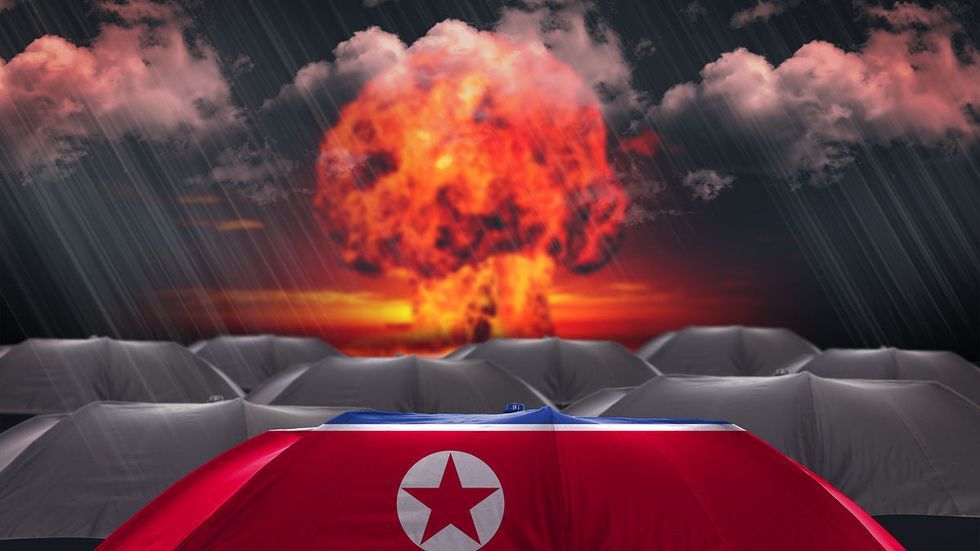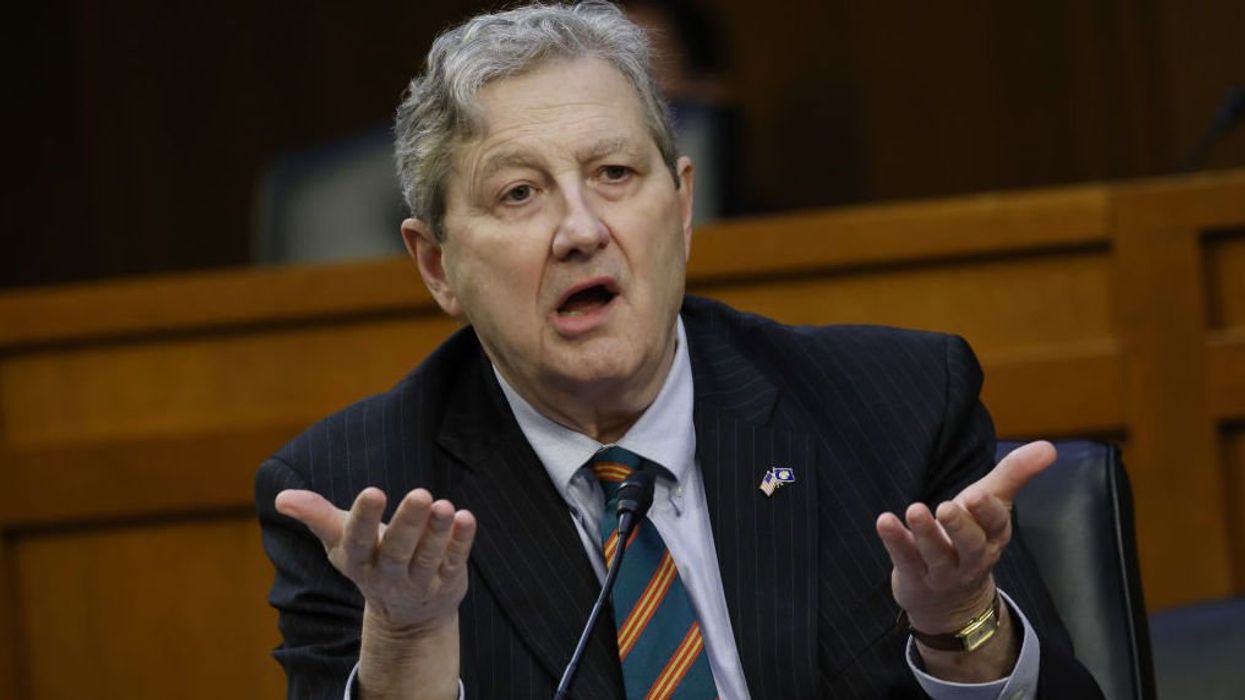
© 2024 Blaze Media LLC. All rights reserved.
President Trump may soon have to make a firm decision on how to best preserve U.S. interests abroad while also protecting American lives from the rogue state of North Korea. There is no easy way out of the North Korea crisis, especially in the wake of North Korea’s sixth nuclear test over the weekend, in which Pyongyang claims it tested a hydrogen bomb.
There are no perfect options, but President Trump may decide to utilize one or several of the options below to end the threat. These options can be combined and harnessed to form a grand strategy to defeat the enemy in Pyongyang.
War
The defensive war option is all but guaranteed in the event of North Korean kinetic aggression. Defense Secretary James Mattis has promised that the U.S. would respond to any North Korean attack on America with a “massive military response.”
There’s also the offensive war option, which would presumably involve preemptively targeting and destroying North Korea’s nuclear sites. A successful operation would almost completely eliminate the threat to the continental United States, but it comes with many risks.
For one, there’s no guarantee that U.S. intelligence has perfectly mapped out all of the nuclear sites in the Hermit Kingdom. Another issue involves whether North Korea would respond and launch an all-out war on South Korea, which would result in death and devastation for thousands, if not millions of Koreans.
The U.S. can also bolster its East Asian presence in a massive show of force, stockpiling both offensive and defensive assets in the form of missiles, carrier groups, and other military resources. (See Conservative Review Editor-in-Chief Mark Levin’s strategy for dealing with the regime, which gets into more detail about the resources needed for a Reaganesque strategy.) The White House may also encourage South Korea and Japan to build up its military to better deter aggression.
Cyber
President Trump can rely on advanced cyber technology to disrupt the advancement of North Korea’s nuclear program, pointing to the U.S.-Israel developed Stuxnet virus deployed against Iran as an example. Our cyber warriors can also attempt to disrupt missile launches, as some Trump administration officials have alluded.
But it’s significantly difficult, if not impossible, to wage a cyber war against the North Korean regime. North Korea utilizes offline critical infrastructure, and un-networked, closed-circuit communications, presenting little opportunity for cyber teams to make a significant dent in North Korea’s military apparatus.
Coup
The United States can decide to implement a plan that strategically targets assets important to the leadership in Pyongyang, and attempt to overthrow the Stalinist regime there. But with a population that’s literally propagandized from birth to hate the United States, there’s no guarantee that someone even more hostile than the maniacal Kim Jong Un would assume his place.
Appeasement
The past three administrations have dealt with the North Korea issue largely by paying off the Kim dynasty with humanitarian aid.
As Pyongyang saber rattled, the Clinton, Bush 43, and Obama administrations appeased the North Korean regime with steady cash infusions. This approach kicked the nuclear can down the road to President Trump, who may also decide to continue rewarding the regime for its unhinged aggression.
Diplomacy
Since there is no known direct line of communication between the United States and North Korea, the White House may choose to engage our Chinese adversary and East Asian allies to mitigate the threat.
China has a vested interest in the stability of North Korea, as the collapse of the Pyongyang regime would lead a humanitarian and mass refugee crisis into China.
If China refuses to play ball, the United States can make several maneuvers to ratchet up the pressure on Beijing. The U.S. can apply crippling sanctions and tariffs, or bolster allies like Taiwan, Japan, and South Korea with advanced weaponry and/or increased aid.
In addition to China, Russia is another major player on the North Korean front. The Kremlin has remained largely neutral of late, but retains official relations with the country, sometimes using the country as a tool to undermine U.S. interests.
Russia continues to trade with and provide aid to North Korea. The U.S. can call on Moscow to do what it can to at least preserve the regional status quo.
Sanctions/tariffs
President Trump and Cabinet officials have floated the option of punishing sanctions — ones that would also target countries that trade with North Korea.
“The United States is considering, in addition to other options, stopping all trade with any country doing business with North Korea,” President Trump tweeted over the weekend.
Of course, the downside to these potential sanctions is that they would cause great harm to the American consumer, since the U.S. imports massive amounts of goods from China.
U.N. Ambassador Nikki Haley has called on the United Nations to impose further sanctions on Pyongyang itself. “Only the strongest sanctions will enable us to resolve this problem through diplomacy. We have kicked the can down the road long enough. There is no more road left,” Haley said Monday.
Do nothing
Simply not reacting is always an option. The Trump administration can choose not to respond to North Korean aggression, and ignore it entirely.
The White House may decide that the Kim regime isn’t serious, calling their possible bluff, and continuing the regular state of affairs on the Korean Peninsula.
Want to leave a tip?
We answer to you. Help keep our content free of advertisers and big tech censorship by leaving a tip today.
Want to join the conversation?
Already a subscriber?
more stories
Sign up for the Blaze newsletter
By signing up, you agree to our Privacy Policy and Terms of Use, and agree to receive content that may sometimes include advertisements. You may opt out at any time.
© 2024 Blaze Media LLC. All rights reserved.
Get the stories that matter most delivered directly to your inbox.
By signing up, you agree to our Privacy Policy and Terms of Use, and agree to receive content that may sometimes include advertisements. You may opt out at any time.


